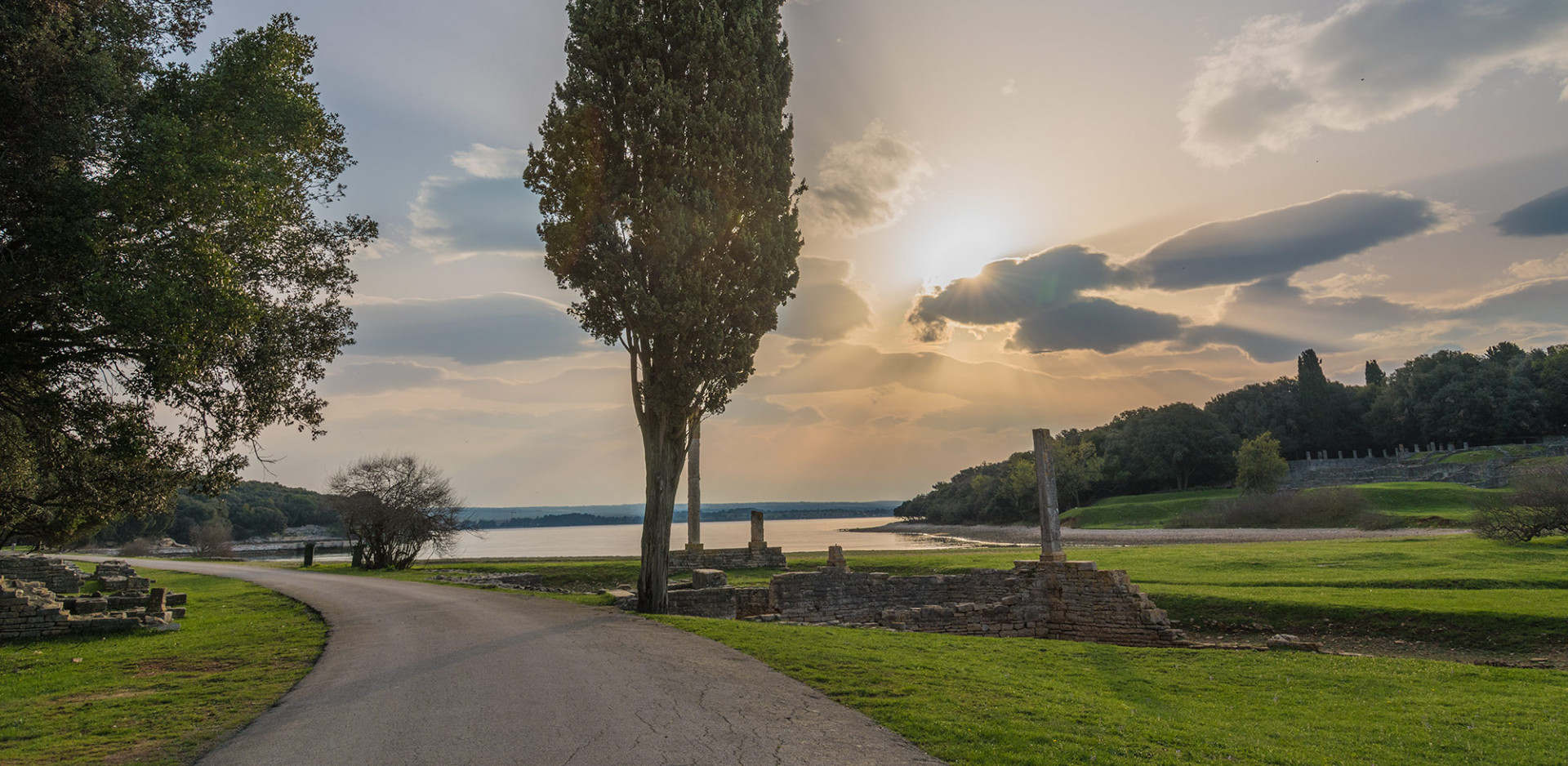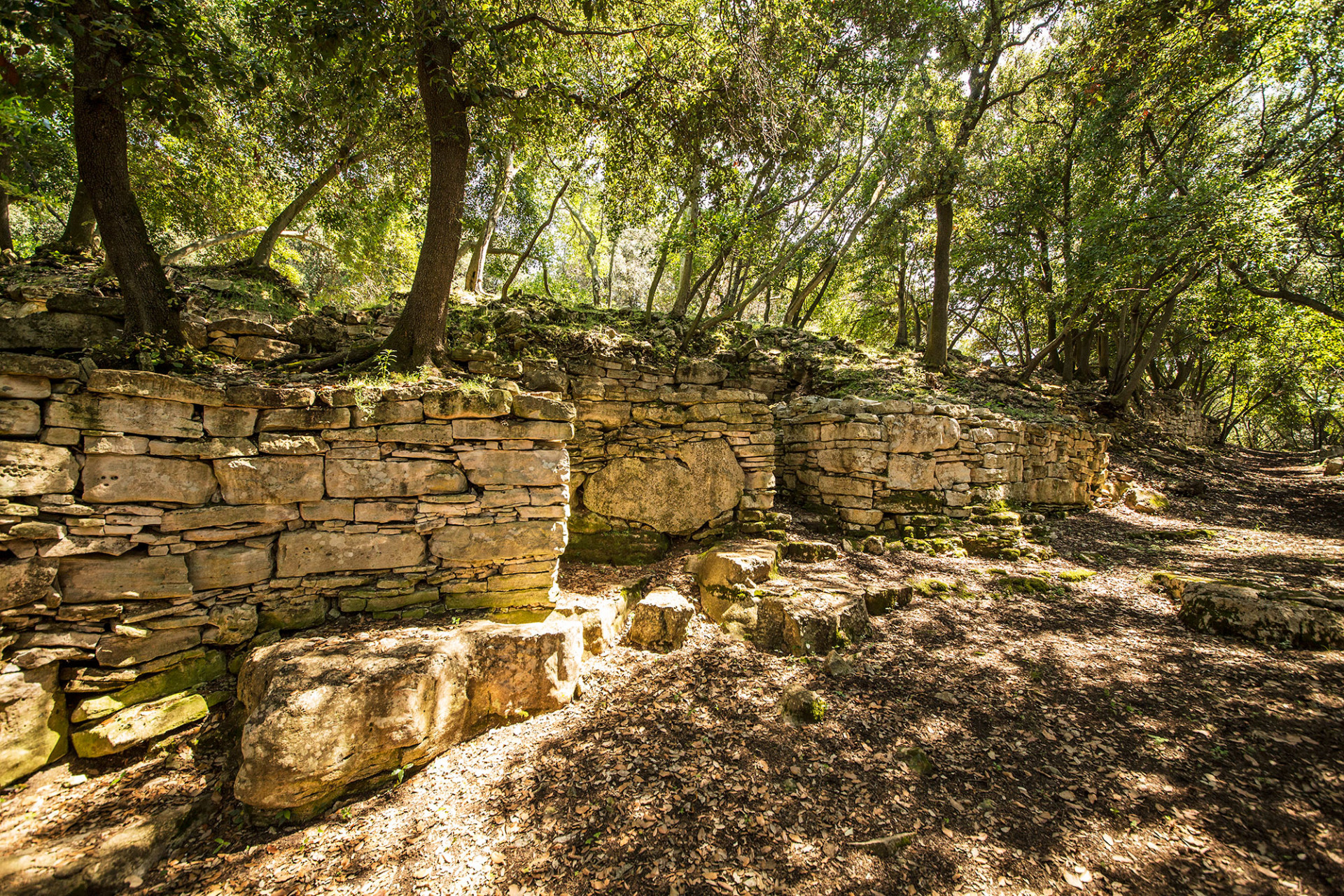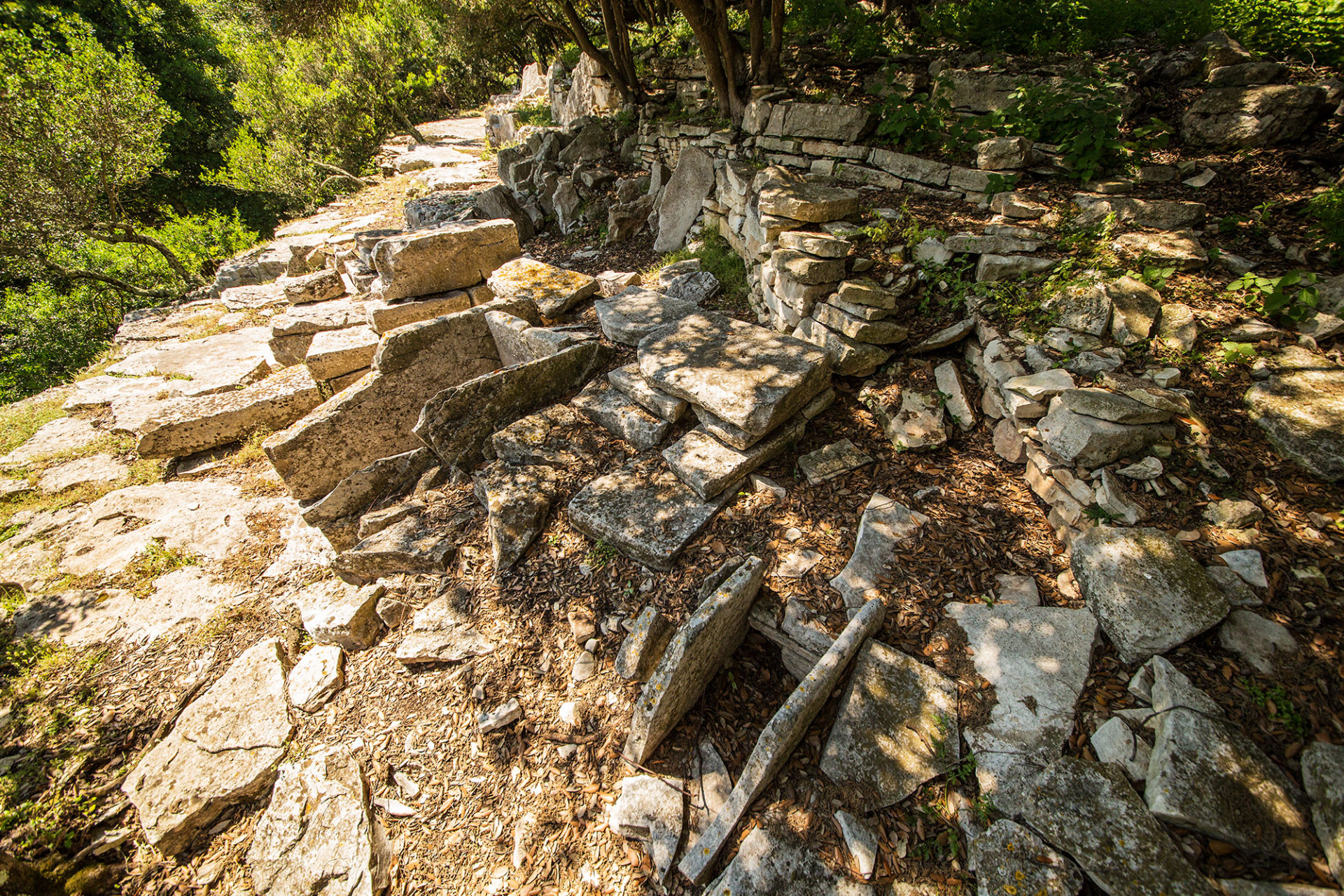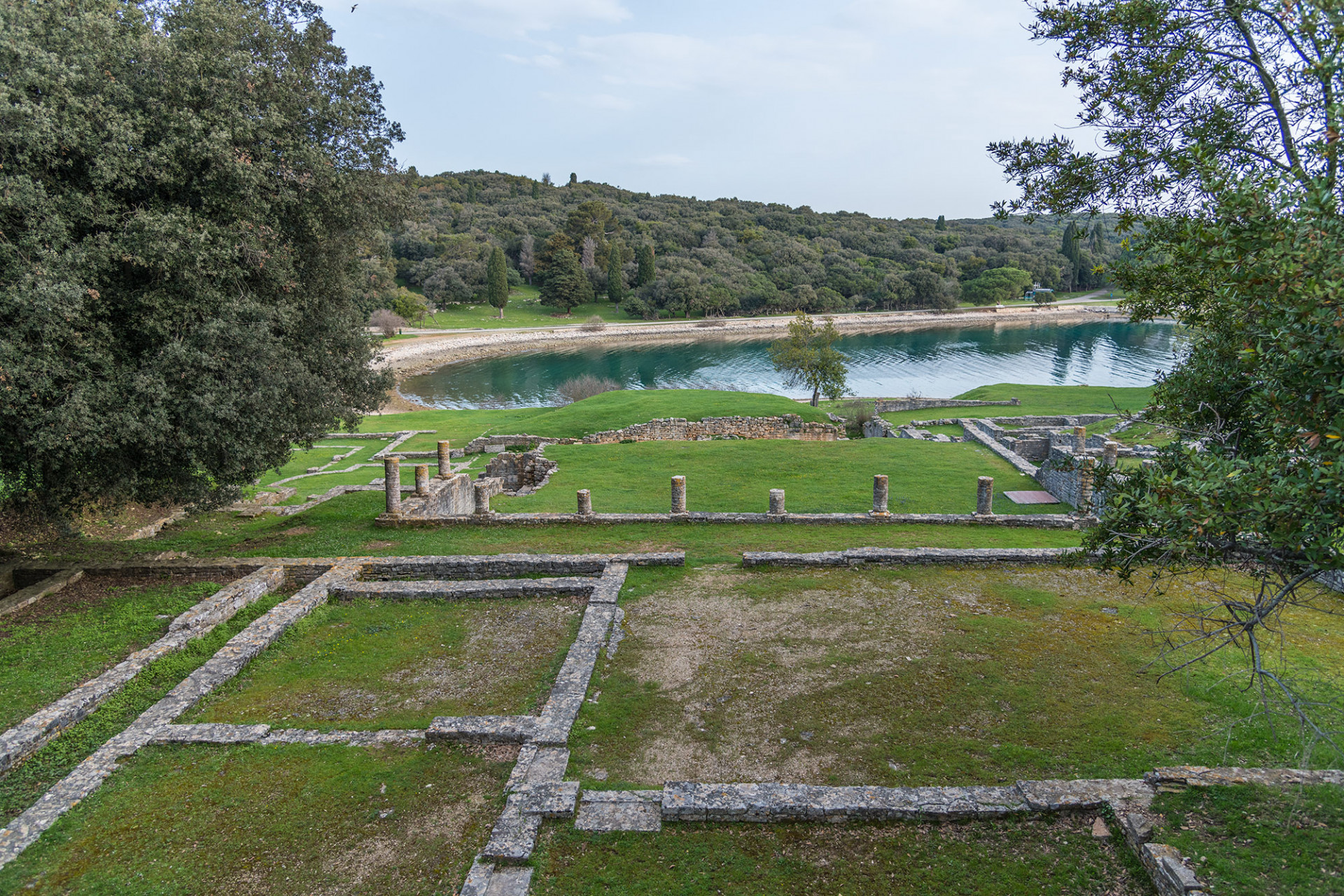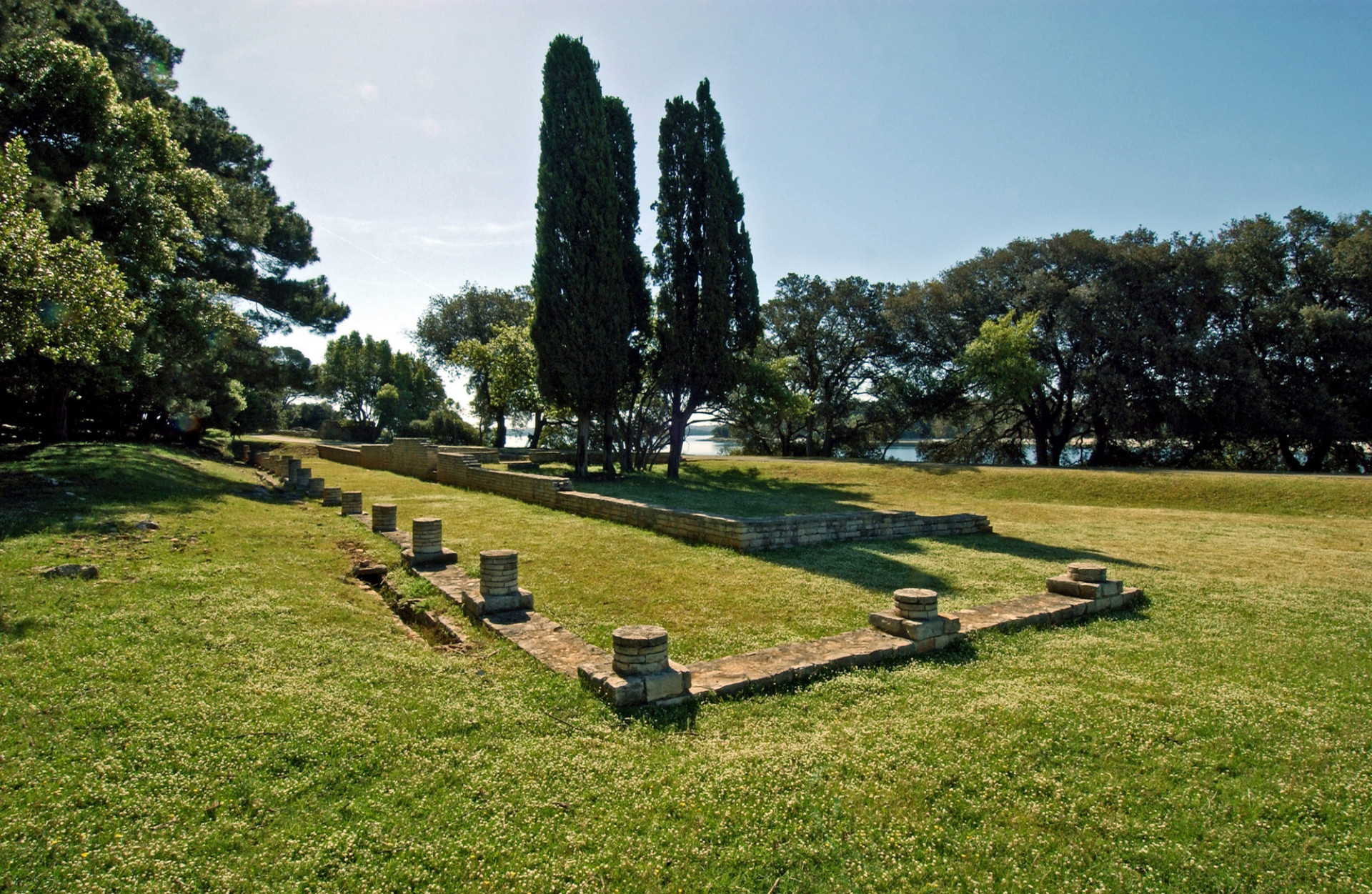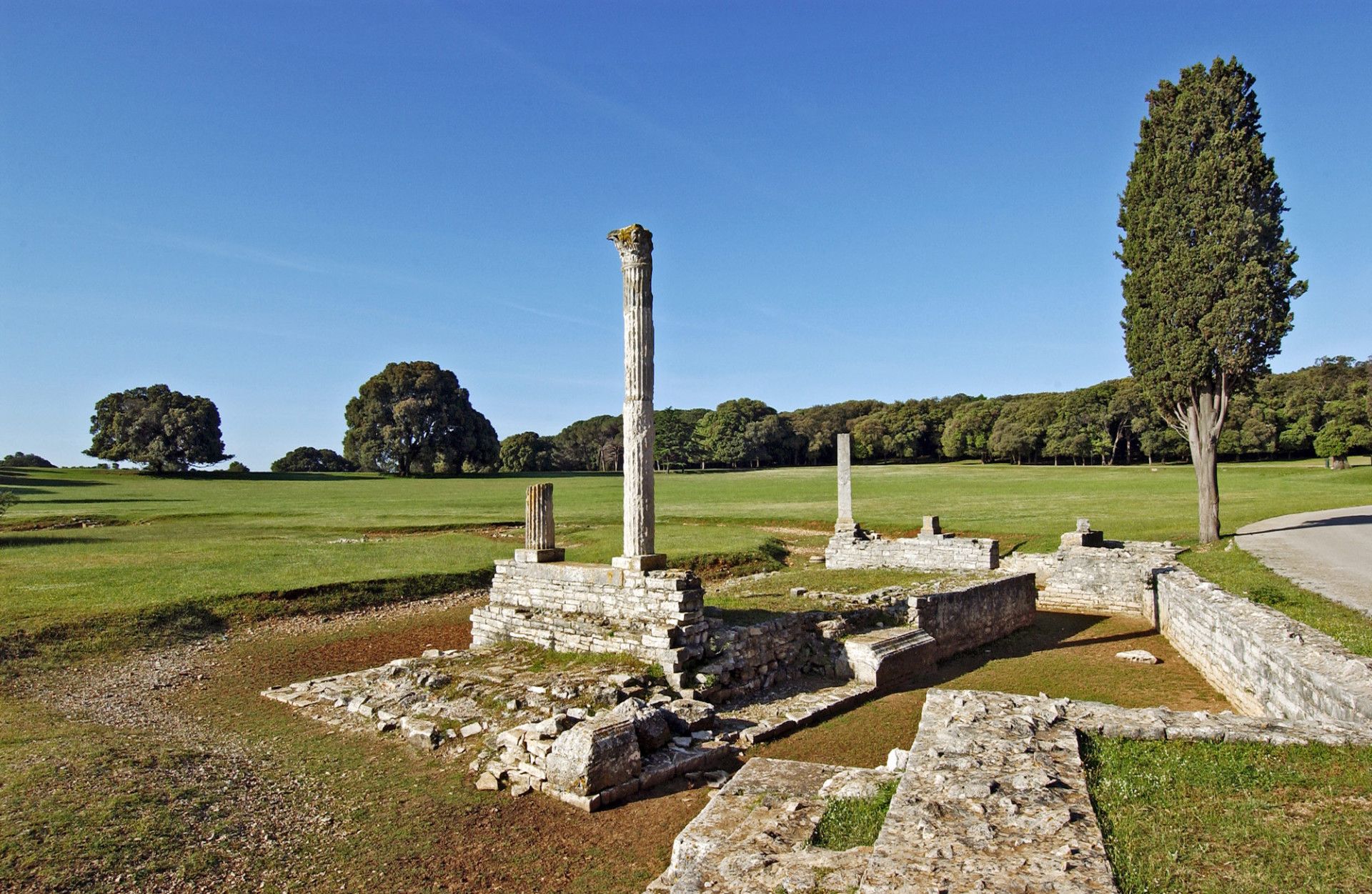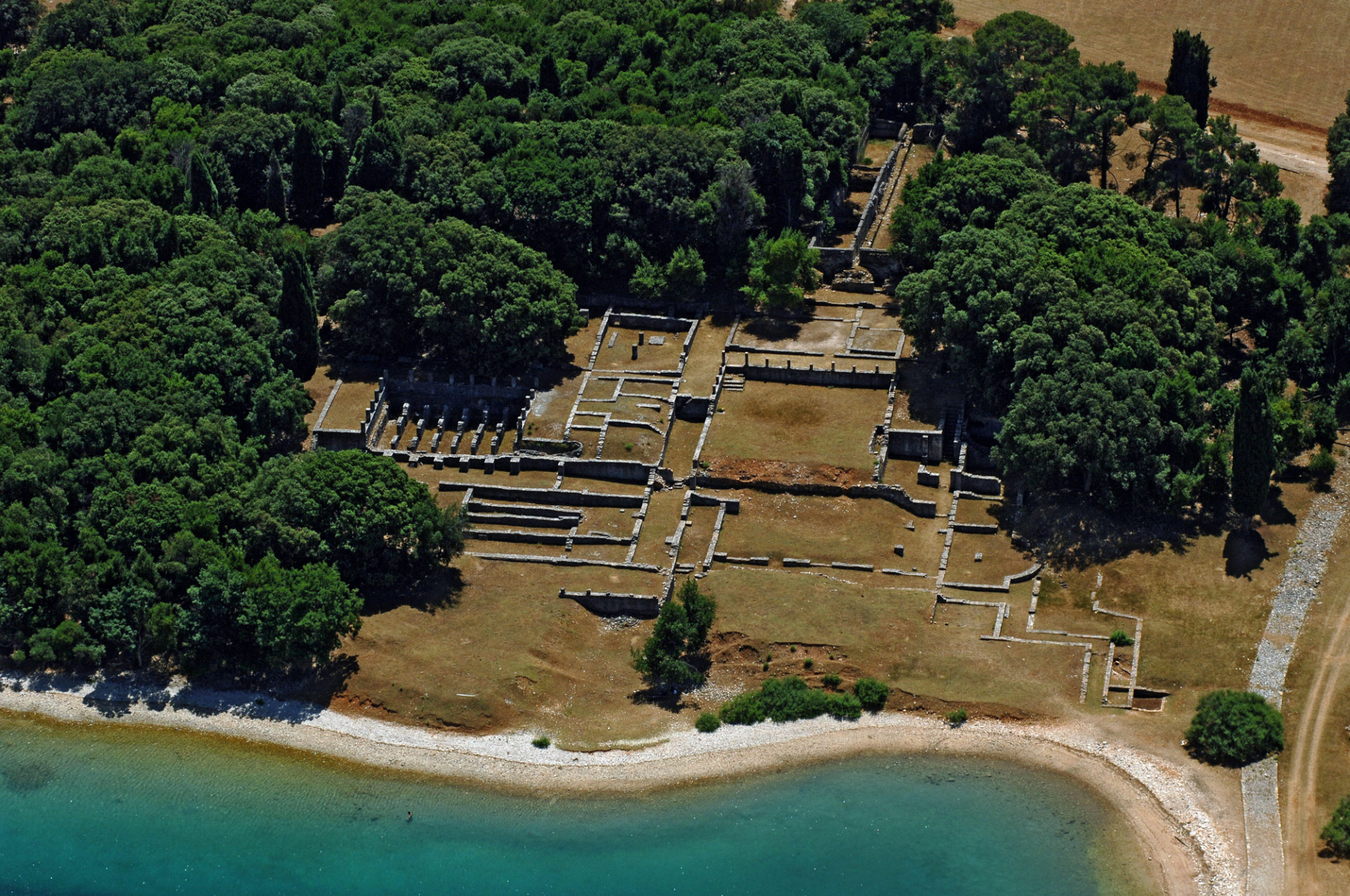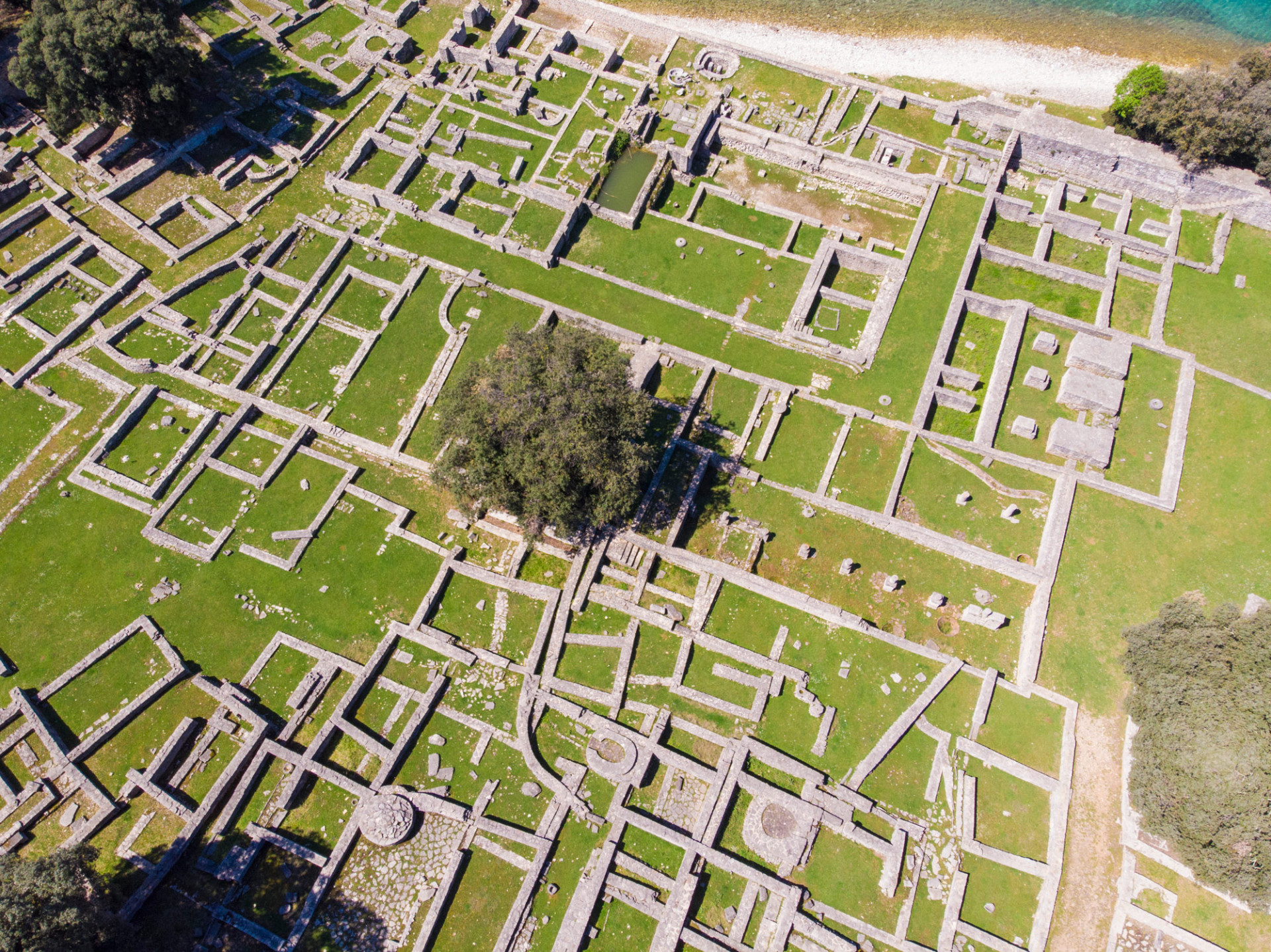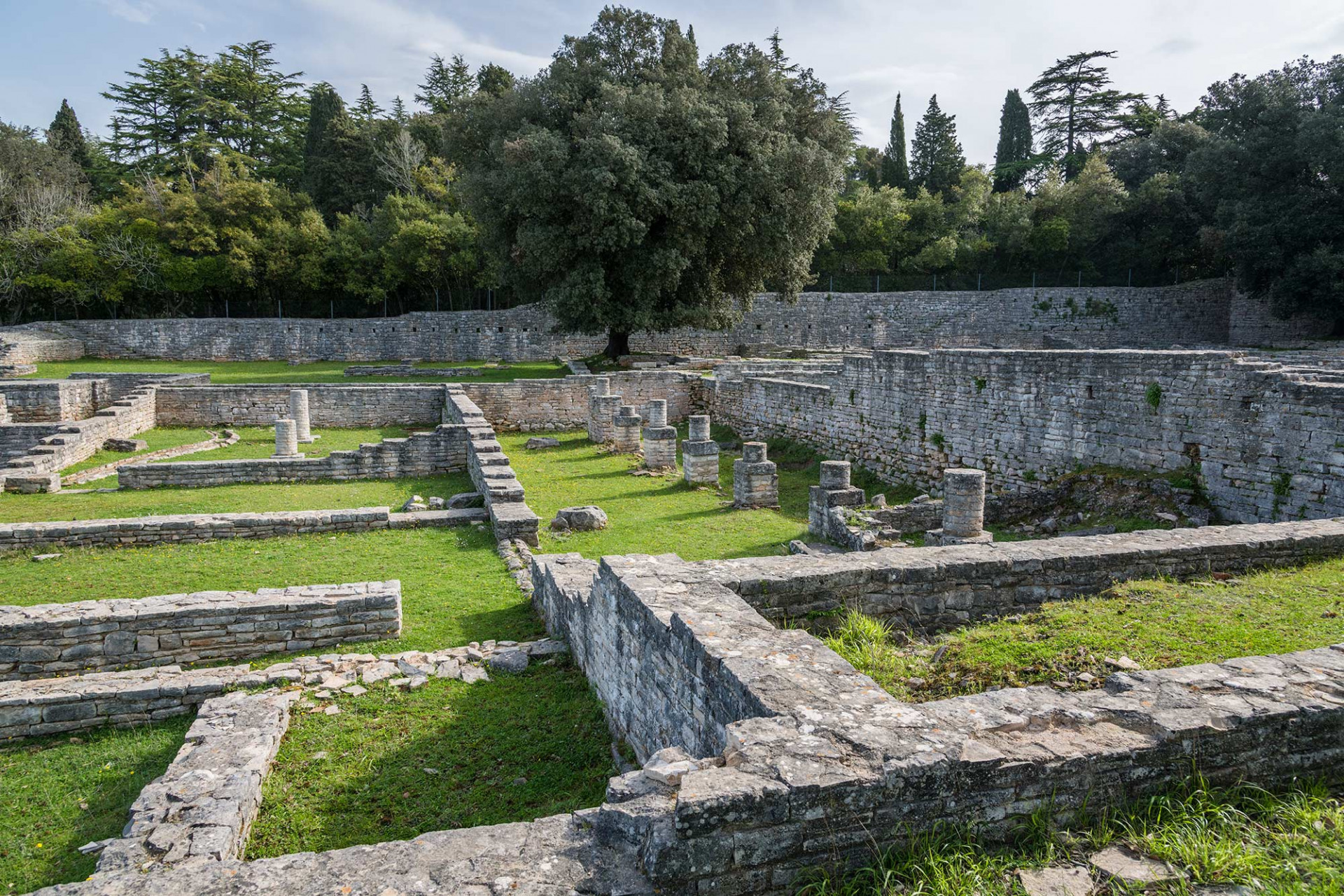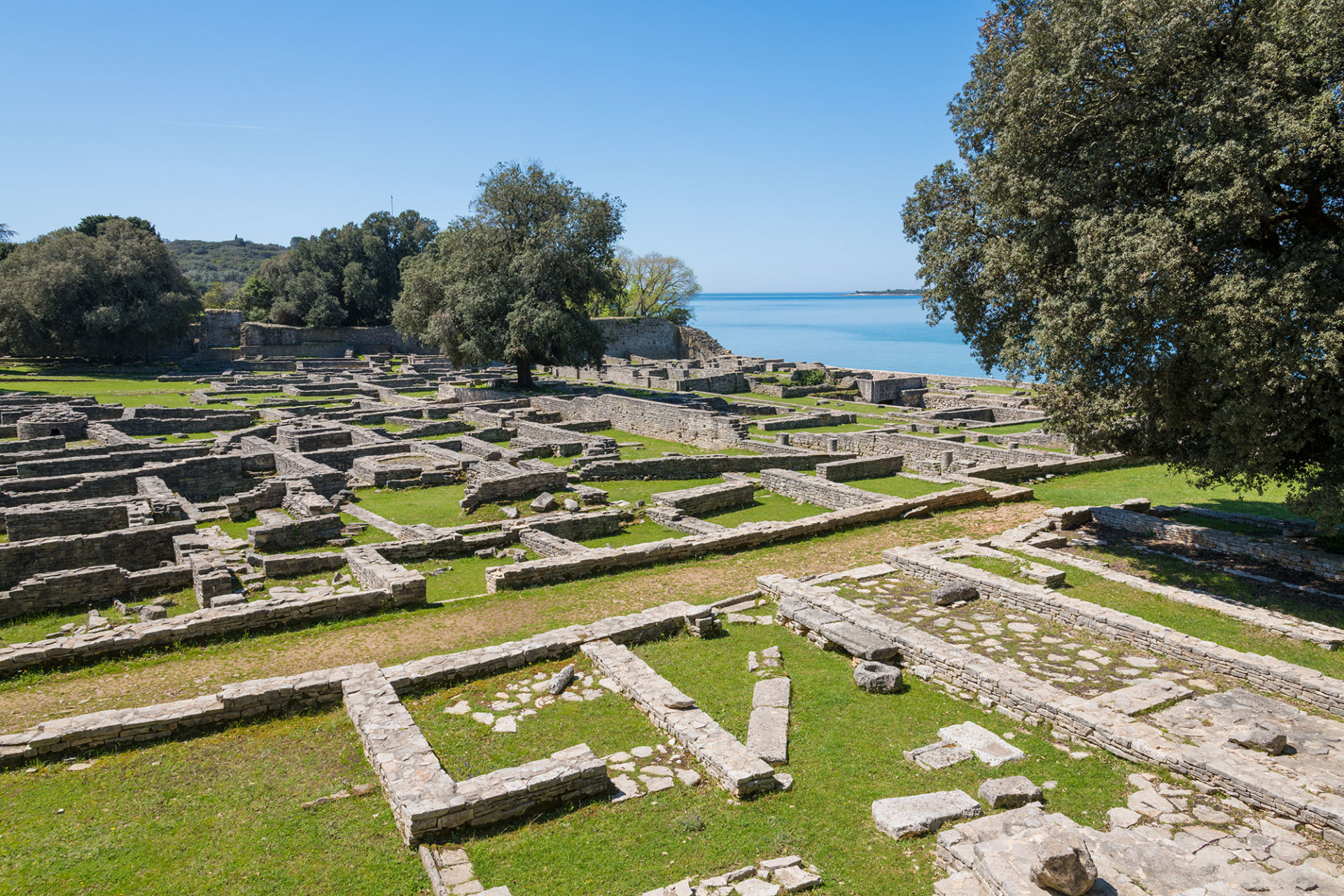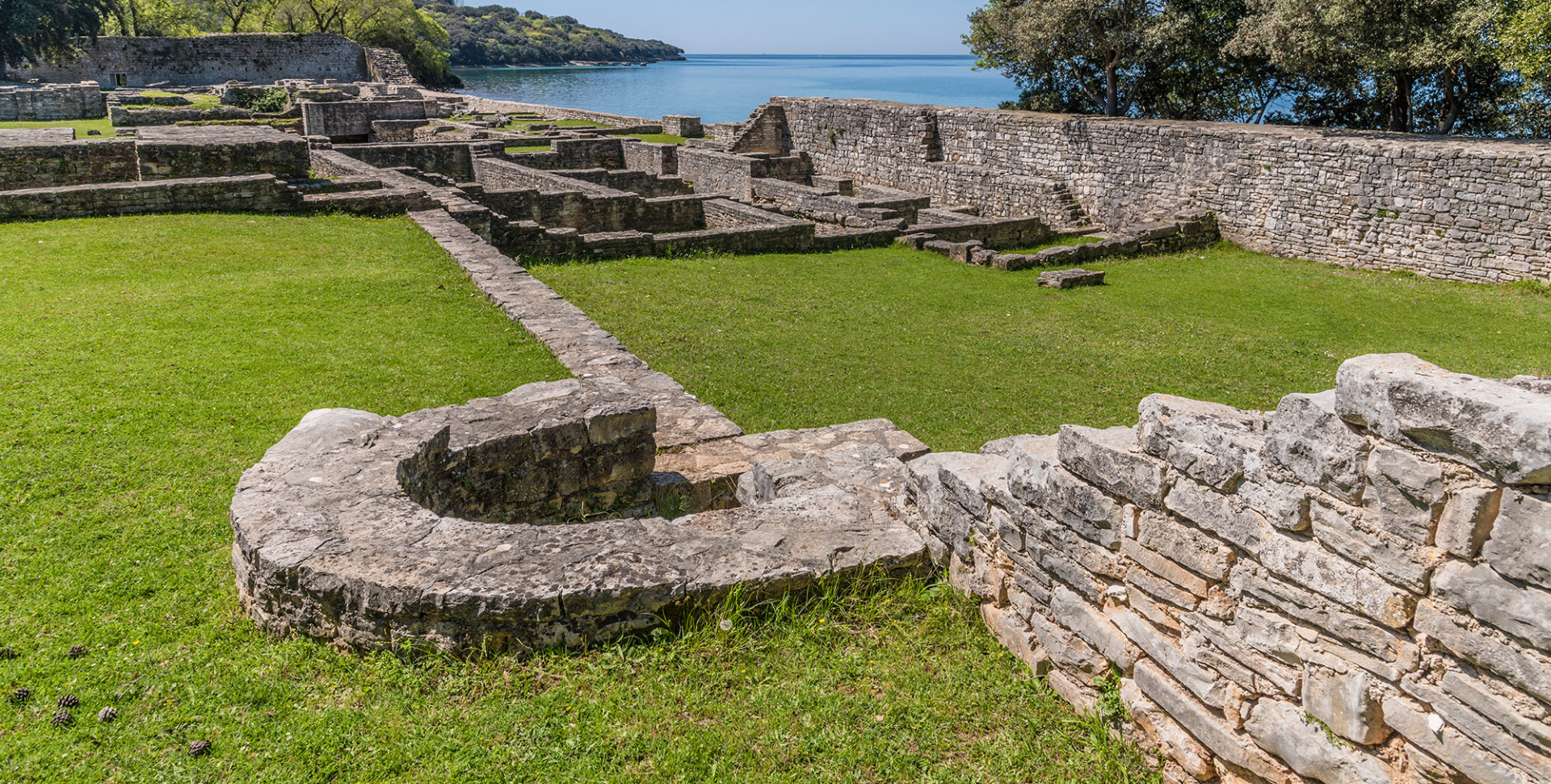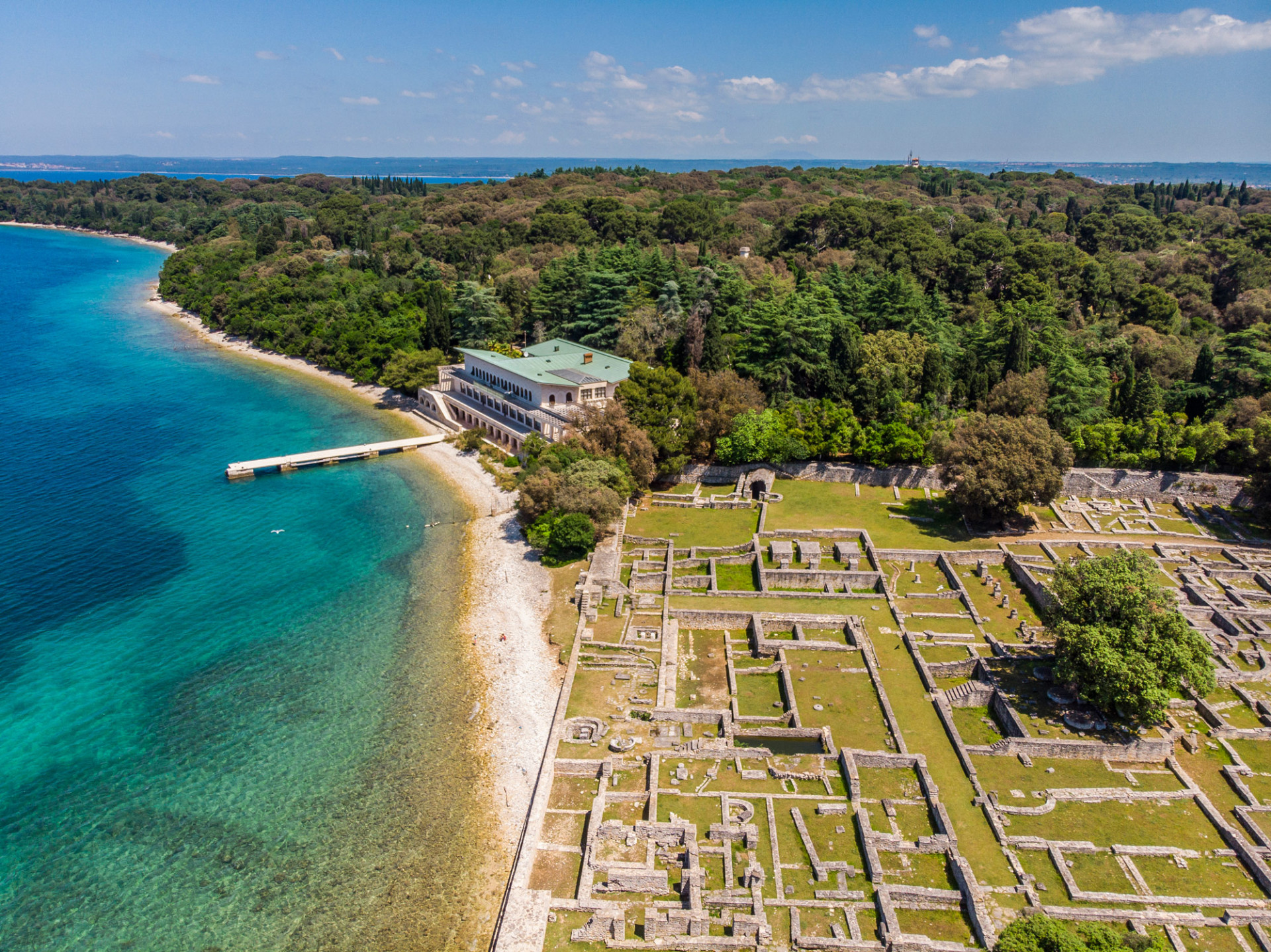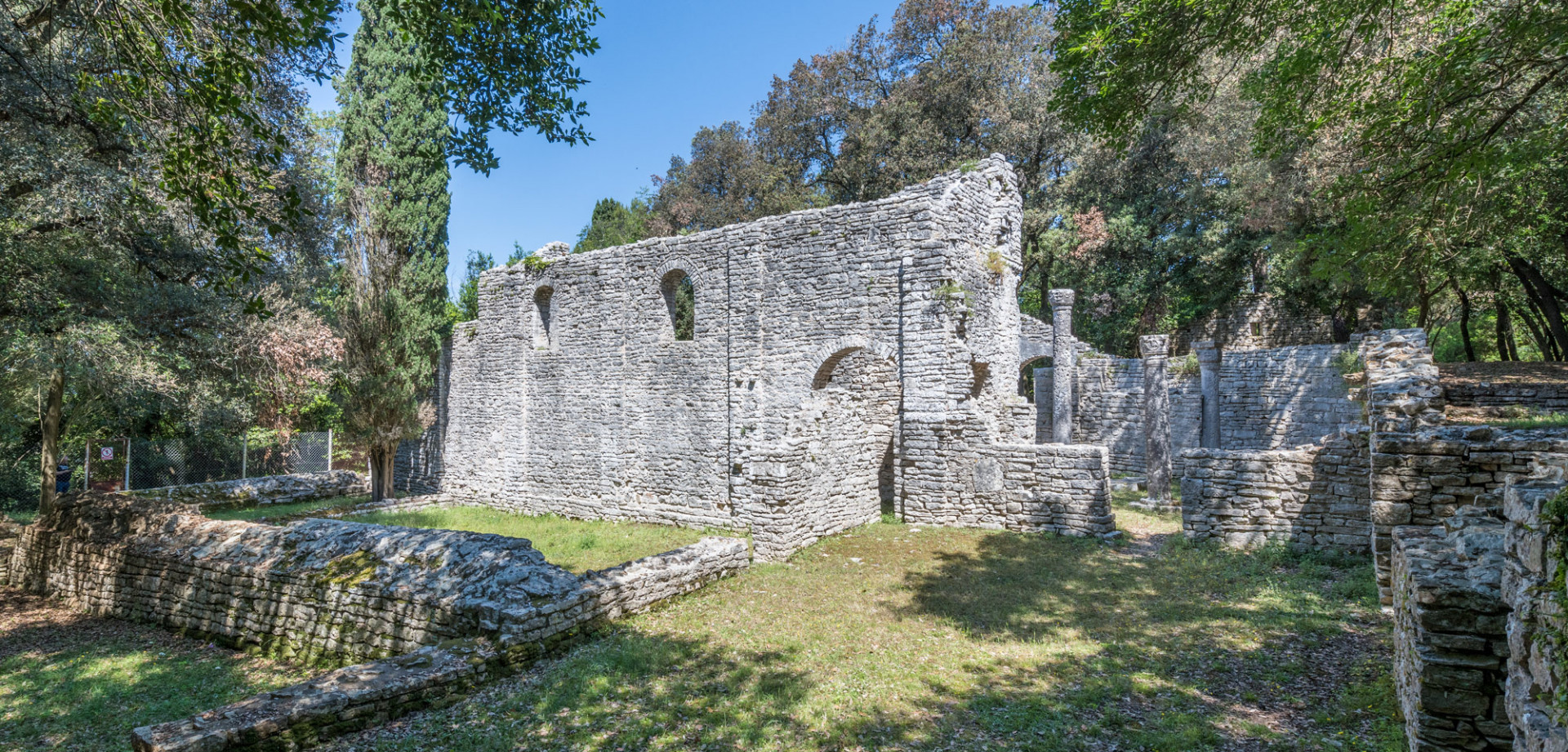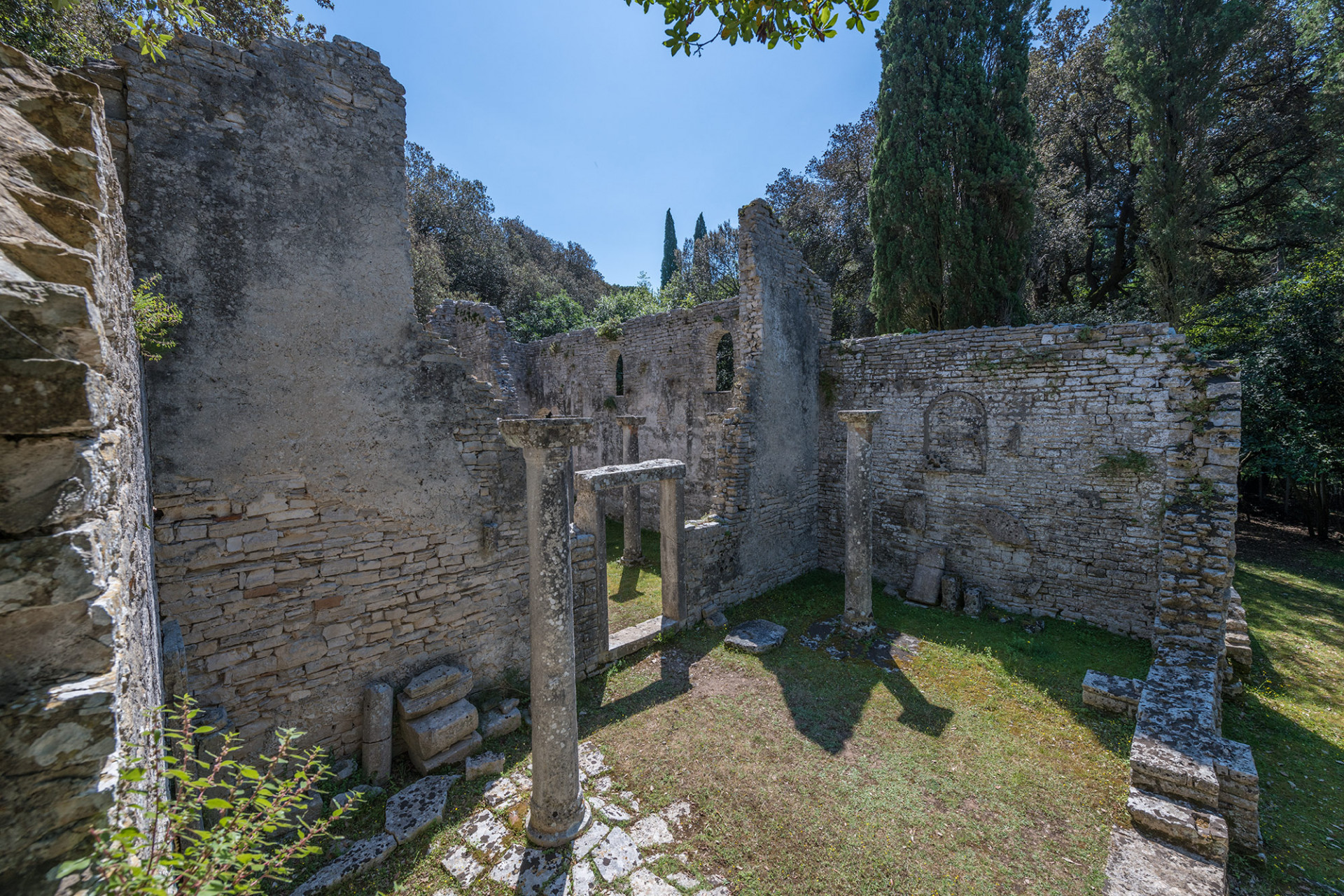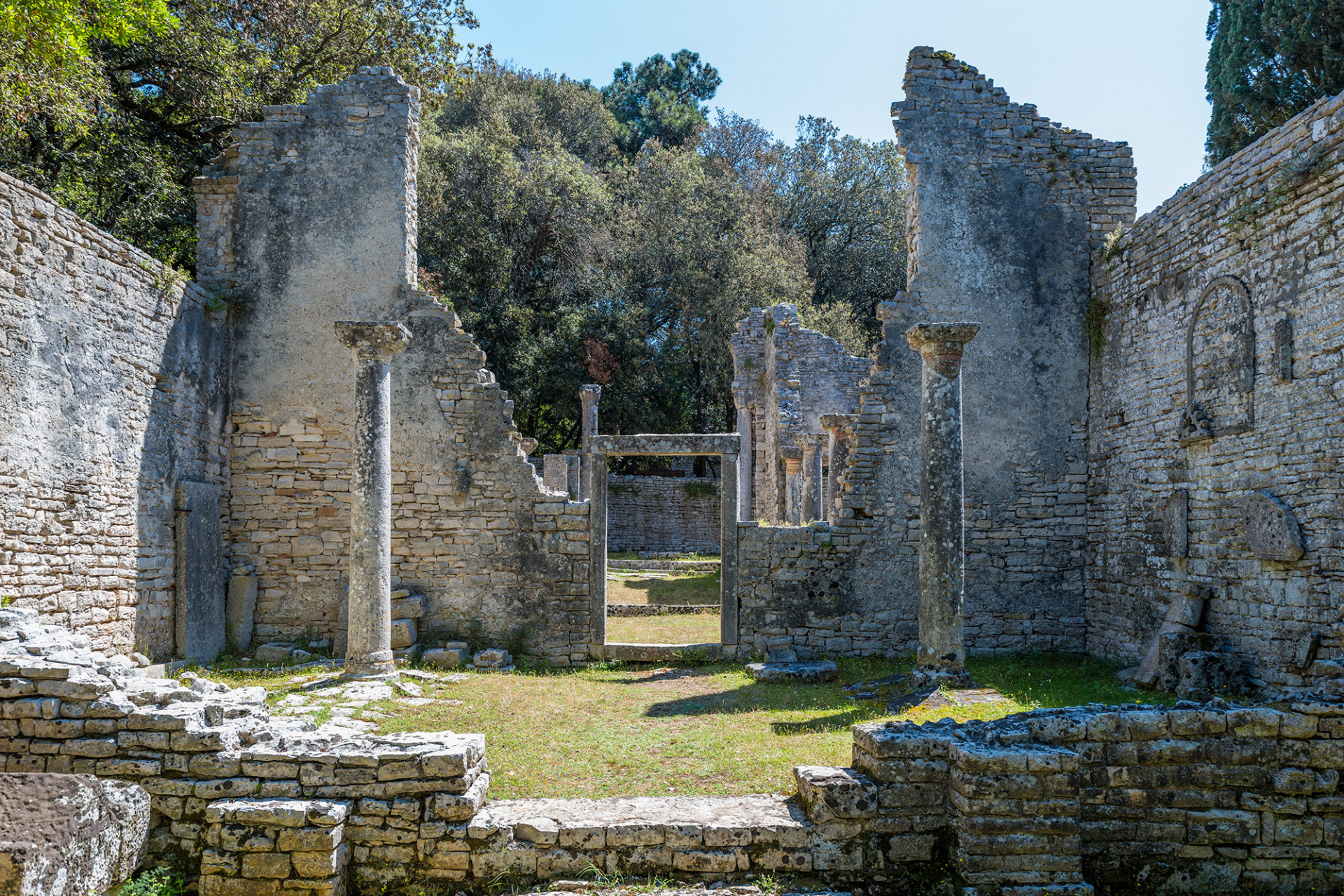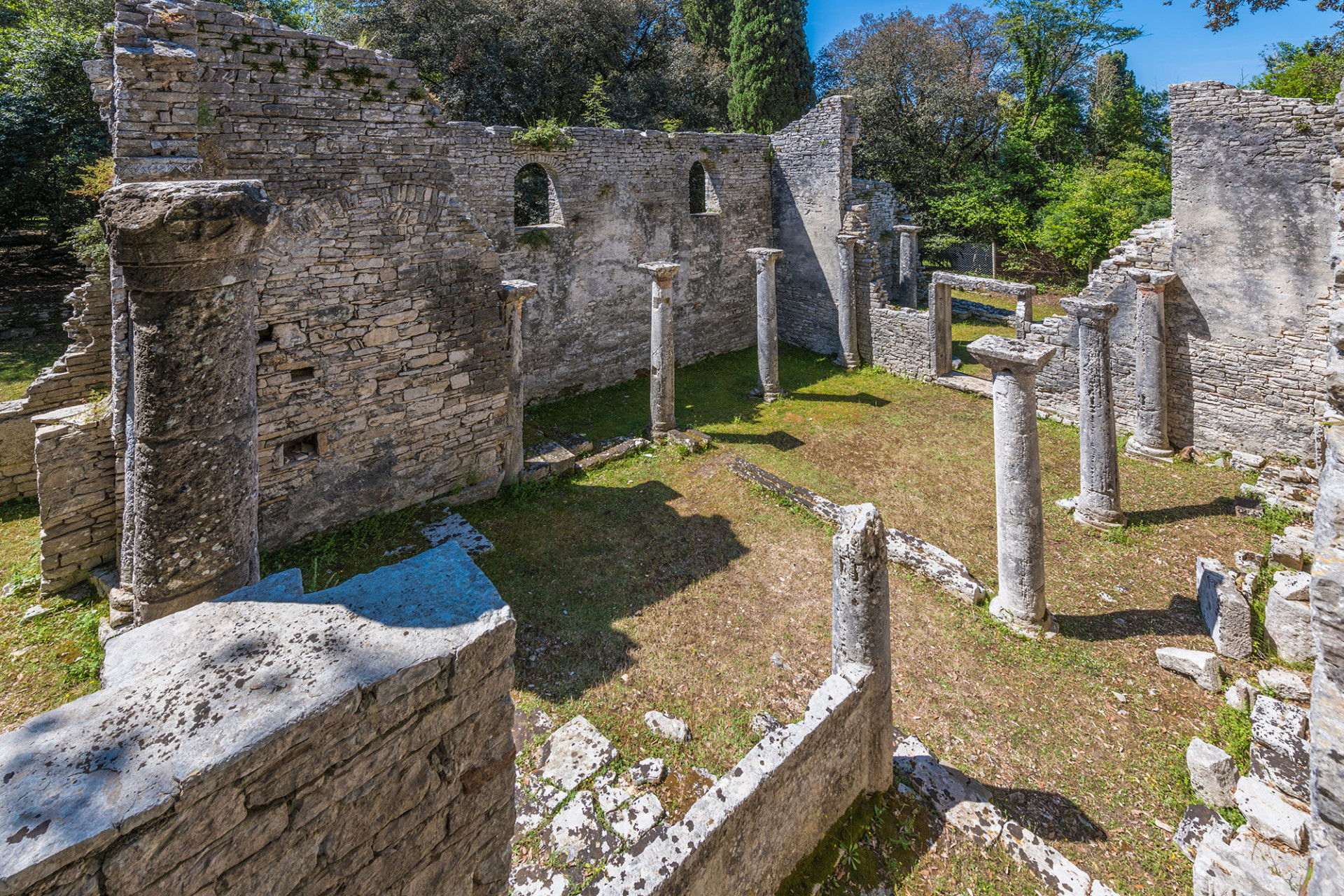Fortified Bronze Age settlement
The fortified Bronze Age settlement with preserved walls, entrance and necropolis on a hill bearing the same name, north of Verige Bay.
The strategically well-protected elevated location was fortified with three concentric circles of walls adapted to the configuration of the hill. The central plateau covered an area of 80x90m, while the diameter of the largest wall was about 300 m. The walls were built of large drystone blocks, while the area between the inner and outer wall facade was filled with rubble masonry.
The shape of a labyrinth
Particularly important were the entrances that were annexed on several occasions, thus assuming the shape of a labyrinth. The so-called Gnirs entrance to the west, over three meters wide at the beginning, at its end is not wider than one meter as to make the penetration of the enemy slow and more difficult. Many pebbles were found on the fortification walls, equally serving for protection, throwing or as artillery for slingshots.
Among the few bronze findings, typical for this period, we must mention the tip of the spear broken in some clash near the Gnirs entrance and the dagger found as a grave offering.
The hill-fort population buried their dead under the stone tumulus in a grave of stone slabs. Such graves with skeleton burials in a bent position were found on the surrounding hilltops Ciprovac, Antunovac and Rankun. In the middle Bronze Age (14th century B.C.) which is when the necropolis at Gradina is dated, cemeteries were located along the settlement fortifications, and beside individual burials in stone graves, there are also family graves.
 Parks of Croatia
Parks of Croatia
 EU projects
EU projects English
English
